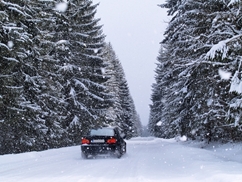
Emergencies and disasters can occur at any time and in any season. Sometimes these are large scale disasters like the recent ice storm across southern Ontario and eastern Canada, while other times they're smaller ones like house fires - the kinds of "silent disasters" that are just as personally devastating as snowstorms. Ensure that your family has a plan in place to be prepared for the worst.
This is never more important than during the winter, when snowstorms and house fires are more common and the weather is unfriendly. You and your family should form an evacuation plan that's smart and safe. The best place to start is by evaluating risks in your community.
The risks
Discuss with your family the kinds of natural disasters your community is prone to. This could mean anything from a prolonged power outage to landslides, tornadoes, forest fires or winter storms. House fires are more predominant during the winter as a result of increased heating and fireplace use. You can call your local municipality and ask about community risks for more information, or check out the Canadian Red Cross' resources.
Make a plan
Once you've identified the risks on your community, work with your family on a home emergency plan for potential winter disasters. Contact your local government's emergency management office or emergency planner to ask about community shelter information in the event that you need to leave your home.
Planning for winter storms is also important, as they can last for multiple days and alongside a power outage can be potentially dangerous, leaving entire communities or regions cut off and possibly without heat. In the event of a power outage, you should be prepared to be self-sufficient in your home for at least 72 hours.
Get a kit
Once you've made your plan, you need to get or make a preparedness kit that is suitable for your family's size (and don't forget pets!). Make a plan that adapts to either situation. One of the best investments you can make is in a preparedness kit. You can purchase one from the Canadian Red Cross or make your own.
You may also want to consider taking a Red Cross first aid class in preparation for potential emergencies and disasters. Instructors can help you learn the signs, symptoms and proper treatment for cold-related conditions, such as frostbite or hypothermia.
Help spread the word about winter storm preparedness with the Red Cross. As one of the largest non-profit humanitarian groups in the country, the Canadian Red Cross strives to ensure winter safety in communities across Canada through proper preparation. Donate today and spread the word!